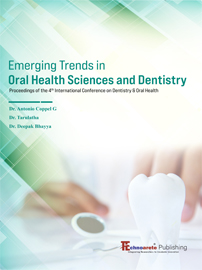


Department of conservative dentistry and endodontics, Chettinad dental college and research institute, Kanchipuram, India;
Corresponding Author:priyanganive@gmail.com
Department of Conservative dentistry and Endodontics, Chettinad dental college and research institute, Kanchipuram, India, 603103
Corresponding Author: Dr.anupama@gmail.com
Department of Conservative dentistry and Endodontics, Chettinad dental college and research institute, Kanchipuram, India, 603103
Corresponding Author:drsadasiva@yahoo.co.in
Department of conservative dentistry and endodontics, Chettinad dental college and research institute, Kanchipuram, India;
Corresponding Author:dr.anupama@gmail.com
Bur refers to all rotary cutting instruments that have bladed cutting heads. It includes instruments used to finish metal restorations and that used to surgically remove bone and instruments used to prepare tooth.
[1] Bur refers to all rotary cutting instruments that have bladed cutting heads. It includes instruments used to finish metal restorations and that used to surgically remove bone and instruments used to prepare tooth.
[2] Siegel Sharon C, Fraunhofer Anthony Von. Dental burs-what bur for which application? A survey of dental schools. J Prosthodont 1999; 8:258–26
[3] Sharma S, Shankar R, Srinivas K. An epidemiological study on the selection, usage and disposal of dental burs among the dental practioner’s. J Clin Diagnostic Res 2014; 8:250
[4] Siegel SC, Von Fraunhofer JA. Cutting efϐiciency of three diamond bur grit sizes. J Am Dent Assoc 2000; 131:1706-10.
[5] Vimal K Sikri. Text book of operative dentistry 4th Edn, CBS publication
[6] Siegel SC, Von Fraunhofer JA. Dental cutting: The historical development of diamond burs. J Am Dent Assoc 1998; 129:740-5.
[7] Ahmed W, Sein H, Jackson M, et al. Surface engineering of dental tools with diamond for enhanced life and performance. In emerging Nanotechnologies in dentistry, William Andrew Publishing 2018
[8] Henry EE, Peyton FA. The relationship between design and cutting efϐiciency of dental burs. J Dent Res 1954; 33:281-92.
[9] Marzouk MA, Simonton AL, Gross RD. Operative dentistry, modern theory and practice. 2nd Edn, All India publishers 2001.
[10]Reisbick MH, Bunshah RF. Wear Characteristic of burs. J Dent Res 1973; 52:1138.
[11]Carvalho CA, Fagundes TC, Barata TJ, et al. The use of CVD diamond burs for ultraconservative cavity preparations: A report of two cases. J Esthetic Restorative Dent 2007; 19:19-29.
[12]Dammaschke T, Vesnicƴ A, chDž fer E. In vitro comparison of ceramic burs and conventional tungsten carbide bud burs in dentin caries excavation. Quintessence Int 2008; 39.
[13]Garrigue V.; Canet, S.; Dereure, O.; Panabieres, O.; Augias, D.; Chong, G.; Mourad G. ORAL ULCERATIONS IN A RENAL TRANSPLANT RECIPIENT: A
[14] Stiphout MAE Van, Marinus J, Hilten JJ Van, Lobbezoo F, Baat C De. Oral Health of Parkinson ’ s Disease Patients : A Case-Control Study. 2018;2018.
[15]Sajjanshetty S, Hugar D, Hugar S, et al. Decontamination methods used for dental burs–a comparative study. J Clin Diagnostic Res 2014; 8:ZC39
[16]Sharma S, Shankar R, Srinivas K. An epidemiological study on the selection, usage and disposal of dental burs among the dental practioner’s. J Clin Diagnostic Res 2014; 8:250.